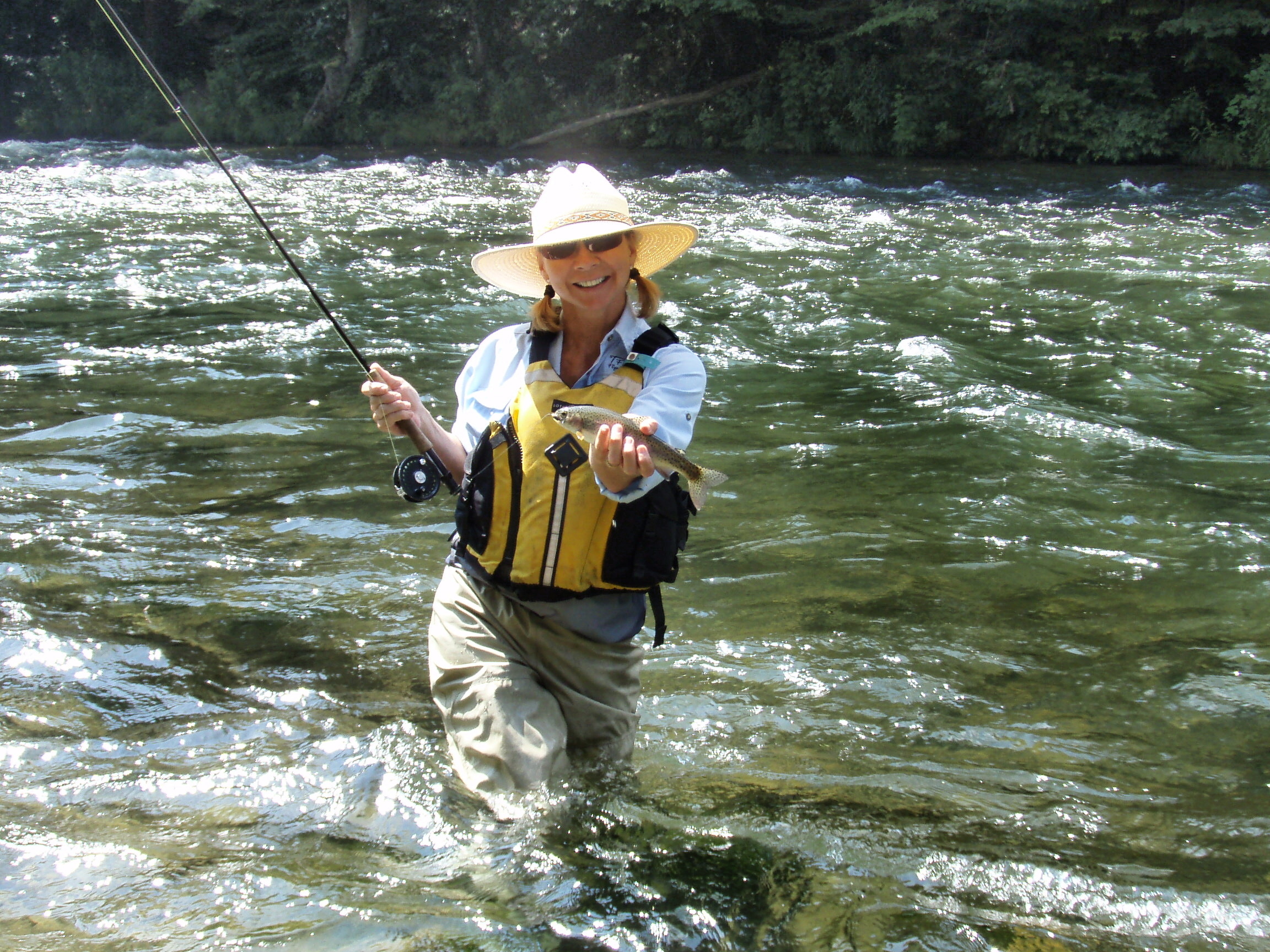It’s winter. It’s cold. There’s too much snow to hunt ruffed grouse. Tying flies keeps you busy, but sometimes cabin fever takes its toll.
So it was one of my first winters in Virginia’s Shenandoah Valley. Mountain trout were too cold and months away from feeding, and I needed to fish.
Thankfully, I found the Jackson River, a tailwater that keeps trout comfy year round. The Jackson kept me sane December through March before the brookies began to stir. And in the summer, when the mountain streams warmed, I could count on a tailwater to produce. Quite often my go-to water while on vacation in August was the Nantahala in Bryson City, N.C. Back home, it was Trico time on the Jackson.
So as we head into the heart of winter, here are a handful of tailwater tidbits that can provide you with year-round fishing.
Safety
Tailwater fisheries are damn controlled. The Jackson, for instance, draws water from Lake Moomaw. Releases are not always predictable. Sometimes, there’s a nice, steady flow that makes it easy to wade. Sometimes, though, the flows are unsafe.
Each tailwater I’ve fished has a release schedule and a phone number you can call to confirm, but that’s not always accurate. I found out the hard way when on North Carolina’s Tuckasegee River. I was fishing the middle of a run. The water started to rise. Knee-deep soon became waist-deep. I had to swim to shore to avoid being swept downstream.
Moral of the story: Pay attention to your surroundings. Get to shore when the water starts to rise, not after.
The Equipment
In tailwaters, because the flow is damn controlled and pulled from a lake, water temperatures are fairly constant, in the 50s where I’ve fished. That means big hatches and big fish. It also means you’ll need neoprene waders in the winter.
The potential for bigger trout means you will need a bigger rod. I fish a 4 or 5-weight for most trout. For tailwaters, I use a 6-weight. A 9-foot rod will do; a 10 is better. The longer rod gives you more line control. And because most tailwaters are wide open, you don’t have to worry about snapping a rod tip in a thicket of mountain laurel.
As for leaders, go with a 12, 13-footer, if possible. The lighter the better. Tailwater trout traditionally have an abundance of food. They’re selective because they can afford to be.
Strategies
I love to lay out as much line as anyone. Every fly fisherman, at one time or another, is seduced by distance. The good thing about tailwaters is you have the space to make 60-foot casts, but the truth is you don’t need to make the hero cast. In fact, it’s counter-productive.
Tailwater fish, because they tend to be spooky, are sensitive to micro drag. And we all know the longer the cast, the more potential there is for drag. That’s why it’s best to keep your casts short. Focus instead on stealth, accuracy and line control.
One other factor that can affect tailwater fishing is lake turnover, when the waters will essentially flip in the fall and spring, a process that can influence water clarity and oxygen levels. The timing and duration vary depending on geography. The best approach is to contact the closest local tackle or fly shop for precise up-to-date info.
The Flies
Not all tailwaters are the same, but in general, you can count on big, consistent hatches and small flies — tiny blue-wing olives, midges and tricos. I love fishing the drake hatch or slinging big hoppers when terrestrials arrive, but I’ve never fished a tailwater where big flies were the order of the day.
So, bring your reading glasses to change flies and if you wear regular glasses or contact lenses, make sure your prescription is up to date, because you will need to be visually sharp.
To Sum Up
Tailwater fishing is exceptionally challenging, yet equally rewarding. You will be tested, but rewarded. Regardless of how many fish you catch, it’s important to know you always have a place to find time on the water, even when seasonal trout spots are not available.







